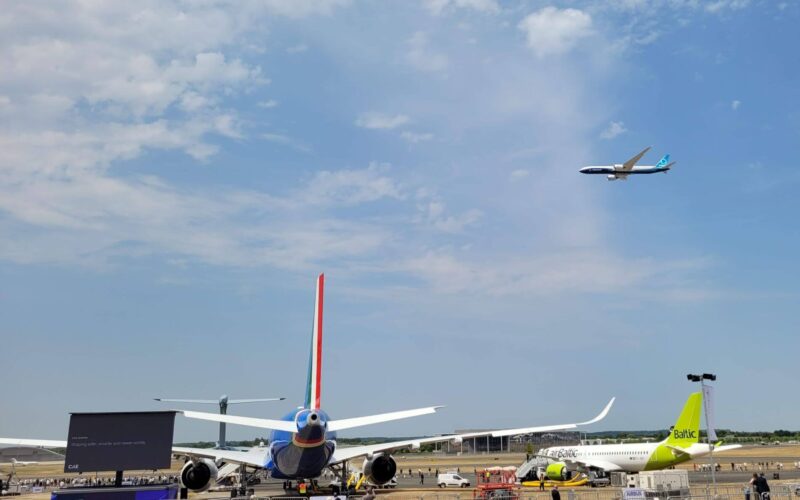As Farnborough 2022 air show concludes, the main question arises: was it worth it? What are the results of one of the world’s biggest airshows, and what results did it bring to its participants?
Undeniably, Farnborough’s main draw for aircraft manufacturers and airlines alike is the business opportunities the airshow provides. So, were there any?
The chart below highlights the sales of the aircraft concluded in the five days of the airshow. It separates firm orders from commitments to place an order in the future: the optional orders, letters of intent (LoIs) and memorandums of understanding (MoUs).
The chart does not include a couple of peculiar deals. easyJet’s order for 56 Airbus A320neos, while concluded at the same time as the airshow took place – and considered as a part of it by some – actually did not take place on the premises of the airshow, but was rather shareholder approval of a previous deal. VietJet’s MoU to buy 200 Boeing 737 MAX aircraft, while might seem like the Airshow’s biggest order, is in fact just a recommitment of the purchase, first signed in 2016. Both of these deals have been excluded from the chart.
It is immediately obvious that the show was the most successful for Boeing. Airbus, meanwhile, had its most disappointing Farnborough in recent years, with just 29 orders. Embraer and ATR were the only other companies that managed to sell aircraft, and both of them fared better than Airbus.
Boeing’s success is mostly owed to one particular model: the newly-reborn 737 MAX. As the chart below shows, it constituted the vast majority of sales for the American company; in fact, more MAXes were sold at Farnborough 2022 than all the other models combined.
The main customers for the 737 MAX, which experienced a long period of grounding following two tragic crashes, were Delta Air Lines, Qatar Airways and investment firm 777 Partners, placing orders respectively for 100, 25 and 30 MAXes, not including options.
Airbus, meanwhile, managed to conduct just two sales on the premises of the airshow, one for the A220 and one for the A321neo. However, it had secured a big win just ahead of Farnborough, with China’s top three carriers ordering almost 300 A320 family aircraft on July 1, 2022.
Such a poor performance led some to conclude that Farnborough 2022 was the low point in comparison with previous iterations of the airshow, perhaps due to still-lingering consequences of the COVID-19 pandemic, the effects of Russia’s invasion of Ukraine or any other causes. But is it really so?
Indeed, this year’s 511 orders and commitments seem tiny in comparison with 1,464 deals concluded at Farnborough 2018. Airbus alone fell from 321 orders and commitments to just 29.
While the fall is undeniable, it is imperative to take a closer look. The chart below shows the breakdown of all deals concluded at Farnborough airshow since 2014.
First of all, Farnborough 2018 was the record year for the airshow, surpassing the previous record year (2014) by a large margin. Second, most of the deals signed at Farnborough 2018 were not firm orders, but rather various kinds of commitments. A switch to “Firm orders” tab shows that the drop between 2018 and 2022 is in fact not that big.
Of course, the performance of Airbus at Farnborough 2022 was subpar, even though the company managed to score a major win over its rival Boeing with the substantial China deal a few weeks earlier. But Farnborough 2022 brought Boeing the biggest number of firm orders in recent years, while both ATR and Embraer demonstrated solid performance as well.
So, was Farnborough 2022 a disappointment for all? Certainly not. However, it probably gave Airbus something to think about.

